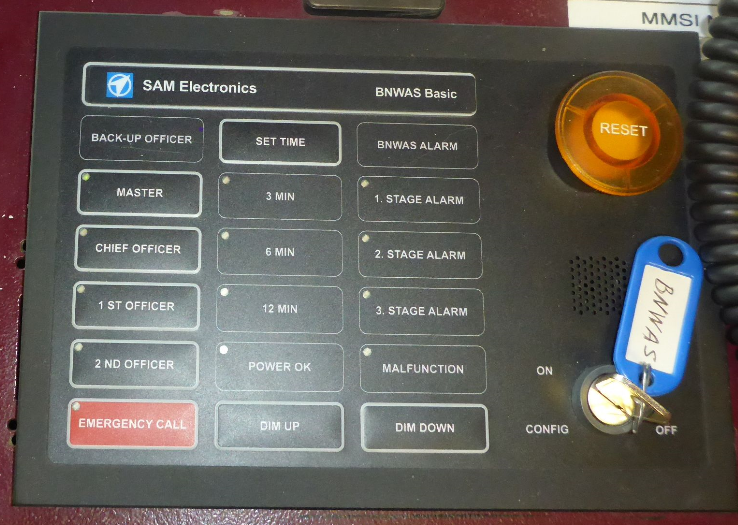Several recent incident investigations have highlighted situations where the Bridge Navigational Watch Alarm System (BNWAS) has either been switched off or has been out of service
The primary function of the BNWAS is to monitor the officer of the watch and detect incapacity that would prevent normal watchkeeping duties being performed. This can include situations such as, a lone watchkeeper falling asleep or suffering illness such as a heart attack.
Although we do not recommend the use of a lone watchkeeper, we understand that this can be achieved in certain circumstances after appropriate risk assessment.
In accordance with the SOLAS regulations, the BNWAS should be in operation “whenever the ship is underway at sea.”1
We would also recommend that the BNWAS is in operation during periods at anchor, as it is also quite possible for the watchkeeper to become incapacitated during this activity.
In order to achieve the full potential of this equipment we advise the following:
1) All owners should review their safety management systems (SMS) and/or navigational policies and confirm that there are clear, unambiguous instructions provided regarding the use of the BNWAS. If it is not clear, these should be amended.
2) Vessel Masters should review their standing orders and determine if they have given clear advice on the use and control of the BNWAS.
3) The operating mode and the duration of the dormant period must always be under the control of the vessel’s Master. If the system is controlled by key, they alone should retain the key. If a password is used, it should be changed from the default setting and should only be known by the Master. The pictured example below should not be the norm.

Image by Walter Vervloesem (FNI)/IMCS Belgium
4) The BNWAS function test should be conducted at regular intervals as determined by each company. Records of this testing (and result) should be recorded within the vessels planned maintenance system. Any failure should be investigated and repaired as soon as practicable. If the BNWAS is out of order for any reason, we would strongly recommend that the use of a lone watchkeeper during navigation is not permitted.
5) Watch handover checklists should include a comment on the status of the BNWAS; where the incoming/outgoing officer of the watch confirms that it is in operation, the correct back-up person is nominated, and the duration of the dormant period is known.
5) The use of the ‘Automatic’ mode function, if available, should no longer be used. 2
6) We would recommend that vessels not required by regulation to fit a BNWAS should be considered for fitment. This is particularly advised in trades where operation with a lone watchkeeper is not uncommon.
References
1 – SOLAS Chapter V, Regulation 19.2.2.3
2 – IMO MSC.1/Circ. 1474

